How the iPhone 7 is shaping the future of accessories
It's a whole new world for headphones, cases and adapters
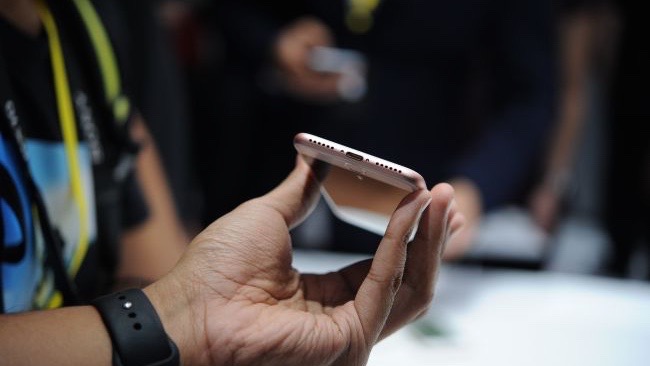
The Apple iPhone 7 and iPhone 7 Plus are finally here, and with them, a huge opportunity for accessory makers.
If you haven't heard, these are the first iPhones to drop the universal headphone jack. The devices have just one Lightning port, a decision that's drawn criticism and mockery in the form of many an internet meme.
Others are lauding Apple's removal of the 3.5mm jack, citing the nearly 140-year-old port as a dying analog standard. Our own Christian de Looper argued the jack's death is a good thing, as Lightning and Bluetooth have matured enough to be viable alternatives for music listening.
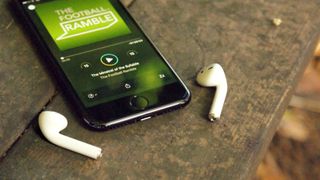
Whichever way you slice it, the headphone jack removal signals a massive change for Apple, and consequently consumers who pick up the new phone. They'll have to adapt to the all-new wireless AirPods, or to using a special adapter to plug in tethered headphones or Apple's new Lightning headphones.
While some consumers may be peeved by the change, accessory makers we spoke to are celebrating the opportunity to offer new headphones, cases and adapters to use with the all-new iPhone.
There's an adapter for that
Audio is understandably the big focus of the headphone jack debate, but accessory manufacturers can leverage the iPhone 7's changes in other ways.
Tough case makers like Otterbox and LifeProof see the device as a path for innovation. While the iPhone 7 and 7 Plus are water resistant for up to 30 minutes in one meter of water, LifeProof offers cases that will be waterproof up to an hour in two meters of water, as well as being drop, dirt and snow proof.
Get the best Black Friday deals direct to your inbox, plus news, reviews, and more.
Sign up to be the first to know about unmissable Black Friday deals on top tech, plus get all your favorite TechRadar content.
But wait - there's an adapter for that!
Otterbox tells us it will continue to innovate with its modular uniVERSE case, which lets you swap different modules out to connect to the iPhone's Lightning port.
"The slotted rail on the back of the case where most of the accessory modules attach is built to be forward compatible, so that modules purchased for one generation of device will work with the next," says an Otterbox spokesperson. "The uniVERSE Case System is really a platform for innovation, so there are endless possibilities to what accessory makers could do to further enhance the new devices."

One of the biggest, and most justified, annoyances of the iPhone 7 is that you can't charge and listen to wired headphones at the same time. With only one port on the phone, there's a choice to be made between jamming out or juicing up.
But wait - there's an adapter for that! Belkin announced its $40 (£35, AU$60) Lightning Audio + Charge RockStar adapter just days after the iPhone 7 announcement. The adapter splits the iPhone's single Lightning port in two, letting you plug in your Lightning-enabled headphones and charger simultaneously.
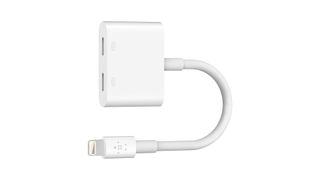
Still, if you want to use your 3.5mm headphones with the adapter, you'll have to plug in Apple's 3.5mm-to-Lightning adapter into Belkin's, creating an unholy cluster of dongles.
Time will tell if more adapters come to the fore, perhaps ones that are a bit more elegant, but Belkin no doubt recognized a need with the iPhone 7 and jumped to be first in line with a solution.
The future is (eventually) wireless
Alongside the iPhone 7, Apple also introduced wireless AirPods. They look a bit ridiculous, but the tech inside is impressive. For example, the earbuds pair with a single tap of a button when you open the case near your iPhone.
It's bloody about time - Jaybird's Rene Oehlerking
Apple also refreshed its line of Beats Bluetooth headphones so the cans are compatible with the iPhone 7. That's all good for Apple, but what do other headphone makers think of the death of the headphone jack?
"It's bloody about time," Jaybird Chief Marketing Officer Rene Oehlerking tells us. "We've always seen the vision of going wireless. We see the headphone jack going away in a year [on phones]. The irony is that Apple is catching up with consumer sentiment."
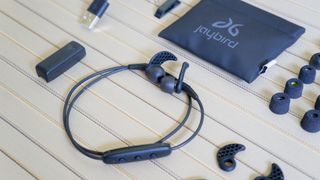
Jaybird is a headphone company that specializes in sports-focused wireless earbuds. Its headphones, like the Jaybird Wireless Freedom, feature a sweatproof build and tons of tips to help users get a perfect fit.
Oehlerking may be praising the headphone jack's dismissal, but he didn't pull any punches talking about the AirPods design.
"I saw this ridiculous strap on the internet that ties your AirPods together," he quips, in reference to Spigen's $10 (about £8, AU$13) AirPod Strap. "They make the AirPods look like our earbuds. The jury is still out for a wire-free product."
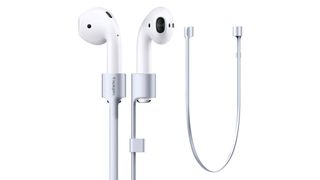
One of the reasons the analog headphone jack is seen as inferior to Bluetooth and Lightning is that the jack doesn't provide nearly as many features as a digital connection. "Bluetooth allows us to let users customize their sound onto the buds themselves," says Oehlerking, referring to Jaybird's mobile app.
Even audiophile headphone companies like Audeze see the death of the headphone jack as an opportunity. Audeze was one of the first companies to release Lightning-enabled headphones; the Sine stuffed a digital-to-analog converter (also known as DAC - a chip that turns a digital signal into sound), into the headphone's cable and remote control. With a 3.5mm jack, headphones have to rely on the iPhone's internal DAC.
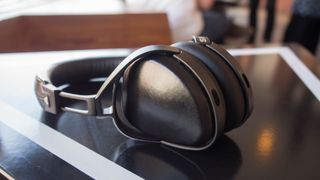
With a digital connection like Bluetooth or Lightning, "you can send biometric data or noise information for active noise cancellation," says Audze CEO Sankar Thiagasamudram. "You will see this as new headphones (including ours) come to the market."
Although digital and wireless may be the future for most consumers, the headphone jack may still live for years to come. "Only the iPhone 7 doesn't have the [headphone] jack. Apple still sells a tonne of iPhone 6 and 5's," says Thiagasamudram. "We think the migration will make wireless mainstream, but high-end headphones will have both [cable and wireless]."
Apple's Trojan horse
While AirPods may not be the best sounding or longest lasting earbuds on the market, they give us a glimpse at Apple's vision for a wireless future. At the center of that vision is Siri.
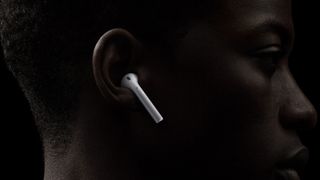
The headphones are inexorably tied to the digital assistant in that it can be activated with a double tap on an earbud. All controls are handled through Siri, even for functions like skipping tracks. In essence, AirPods are a training tool to get iPhone users to rely on Siri constantly.
"Removal of the headphone jack is the first step in a new era of audible search, commerce and entertainment," Bragi CEO Nikolaj Hviid tells us. "There are hundreds of billions of dollars in play and the industry's heavyweights all want a seat at the table."
There are hundreds of billions of dollars in play and the industry's heavyweights all want a seat at the table - Bragi's Nikolaj Hviid
Bragi makes truly wireless earbuds, like the AirPods. Its headphones support iOS, Android and Windows Phone, and it was one of the first companies to bring wireless earbuds to market.
Hviid makes a salient point in that AirPods are Apple's Trojan horse to get people to use Siri all the time. "If you make a search through the nonstandard connector, the manufacturer can force the inquiry to their service," Hviid says, in reference to Siri.
With Apple's AirPods, Siri is just a double tap away. There are no gestures to control volume or music playback; everything is handled through the digital assistant. As Apple fights for dominance in the artificial intelligence space against the likes of Google Now, Microsoft Cortana and Amazon Alexa, it's a smart move to train users to rely solely on Siri with its new earbuds.
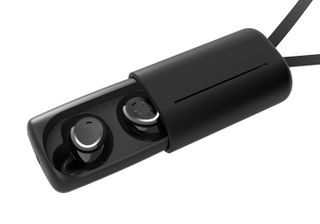
Thankfully, Apple isn't forcing iPhone 7 owners to only use AirPods, so headphone makers like Bragi can take advantage of the wireless revolution, too. In fact, Apple's bragging about its seamless pairing and custom W1 Bluetooth chip may just be an interim solution while we wait for the Bluetooth 5.0 standard to be finalized in early 2017.
All controls are handled through Siri, even for functions like skipping tracks
Jaybird's Oehlerking speculates Apple created the W1 chip to be the first on the market with some of Bluetooth 5.0's features. "Our assumption is that they've implemented some of Bluetooth 5.0 into a Bluetooth 4.2 framework," he says.
Catching up to the future
The iPhone 7 and AirPods will undoubtedly drive accessory design in the future. Depending on whether more phone giants follow, wired headphones and the adapters needed to use them may slowly disappear as wireless becomes the norm.
The signs are already here: Motorola beat Apple to removing the headphone jack with the Moto Z, and, for the first time ever, Bluetooth wireless headphones began outselling wired ones in June of this year, according to market research company NPD.
"People are surrounding themselves with Bluetooth devices," says Oehlerking, citing how televisions, speakers, and other gadgets all feature Bluetooth connectivity, making the transition to wireless even smoother.

Yes, it will be a pain using adapters and pairing/unpairing wireless headphones with our various devices, but the revolution is already in motion. With Bluetooth 5.0 technology on the horizon, expect to see a massive increase in sound quality and battery life of wireless accessories.
While Apple is helping to push a wireless future forward, adapter, case and headphone makers are right alongside, ready to offer up whatever customers need to enjoy this brave new wire-free world of gadgets.
- TechRadar's top-ranked wireless headphones
Most Popular

